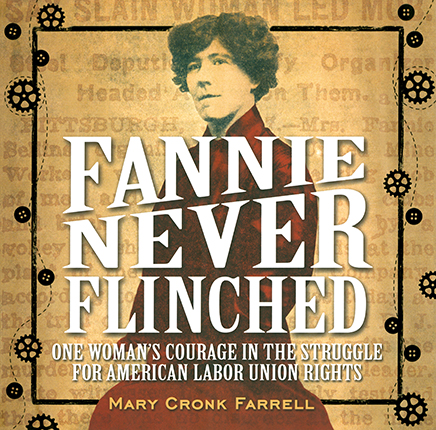Full Text Reviews: Booklist - 10/15/2016 *Starred Review* The author may be addressing this stirring story of early union activist Fannie Sellins (1872–1919) to middle-schoolers, but the rigor of her approach yields a book with solid scholarly features: a noncondescending glossary, a time line for historical context, recommendations for further reading, and a helpful index. In 1902, Sellins was a widowed mother of four working in a St. Louis sweatshop to support her family when she first heard about the United Garment Workers of America, then in its infancy. She helped to organize her fellow seamstresses, most of whom were recent immigrants working 10 to 14 hours 6 days a week for the grand sum of $5 ($145 in today’s currency), into Ladies’ Local 67. The threat of a strike resulted in a grudging doubling of wages, and within a few years Sellins was traveling to hot spots around the country to spread the word. She ultimately landed in Pennsylvania coal country, the site of egregious abuses, where her fervor proved fatal: pegged as an agitator, she was shot in the back while trying to herd children away from a melee. Her story, richly illustrated with vintage photographs and documents, fairly leaps off the page, driving home the message that the work she fought for is far from over. - Copyright 2016 Booklist. School Library Journal - 10/01/2016 Gr 4–6—The narrative begins with the murder of Fannie Sellins by deputies in Natrona, PA, in 1919 and then goes back 20 years to when Sellins first started working at the Marx and Haas garment factory and helped form the local United Garment Workers of America (UGWA) in St. Louis. Sellins moved up the UGWA ladder and traveled the country talking about the plight of factory workers: long days, low pay, and unsafe working conditions. Word of Sellins's abilities reached coal country, where she visited. Sellins supported the coal miners' efforts to unionize. When mine owners brought up scabs from the South, she chased their car along the railroad tracks, yelling at them not to break the coal miners' strike. Though there was no justice for her death, her memory lives on in coal country. In her author's note, Farrell details why she wrote about Sellins and discusses the difficulties she faced in finding reliable information about her subject's personal life. The text is matter-of-fact in tone, with captioned black-and-white photos and newsprint ads. The beige background features buttons, cogs, and stitches along the bottom of each page, and the end pages are scraps of seamed blue fabric. VERDICT An essential purchase for public or large school libraries interested in workers' rights and social justice.—Tamara Saarinen, Pierce County Library, WA - Copyright 2016 Publishers Weekly, Library Journal and/or School Library Journal used with permission. Loading...
|



